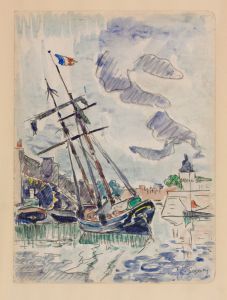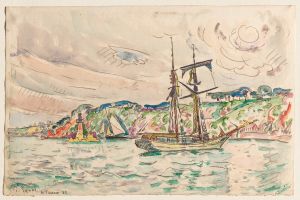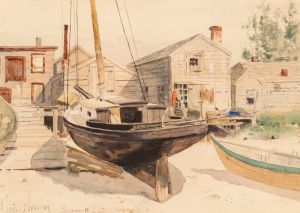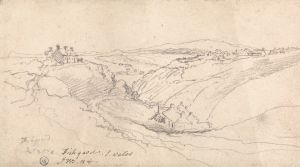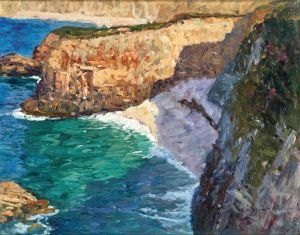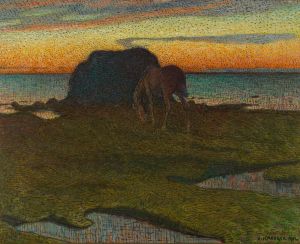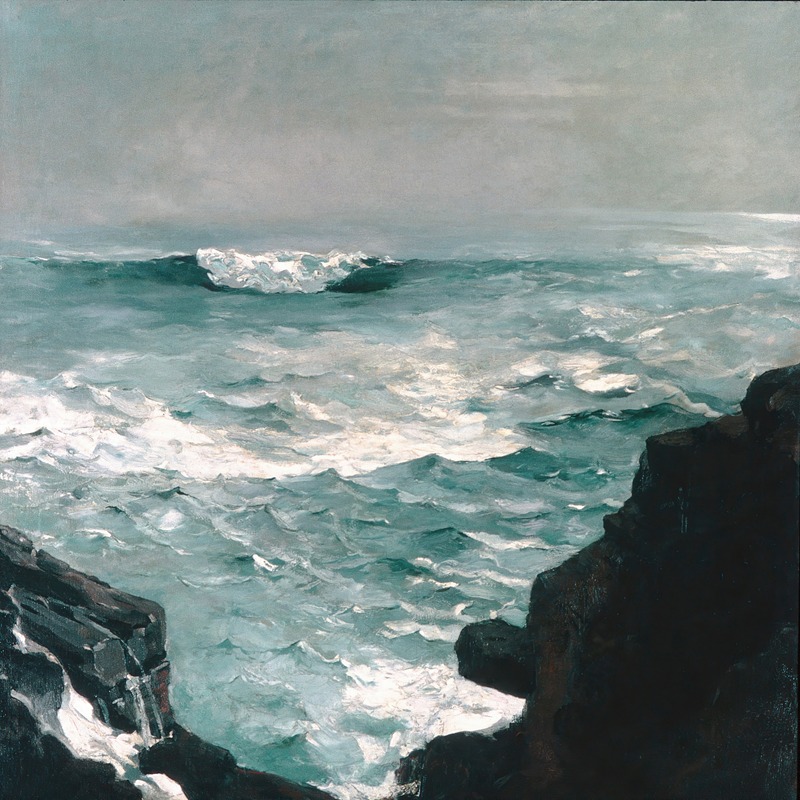
Cannon Rock
A hand-painted replica of Winslow Homer’s masterpiece Cannon Rock, meticulously crafted by professional artists to capture the true essence of the original. Each piece is created with museum-quality canvas and rare mineral pigments, carefully painted by experienced artists with delicate brushstrokes and rich, layered colors to perfectly recreate the texture of the original artwork. Unlike machine-printed reproductions, this hand-painted version brings the painting to life, infused with the artist’s emotions and skill in every stroke. Whether for personal collection or home decoration, it instantly elevates the artistic atmosphere of any space.
Winslow Homer's "Cannon Rock" is an oil painting completed in 1895. The artwork is a notable example of Homer’s mature style, which often focused on the power and beauty of the natural world, particularly the sea. Homer, an American artist, is widely regarded as one of the foremost painters of 19th-century America, and his works frequently depict maritime themes, reflecting his deep connection to the coast of Maine, where he spent much of his later life.
"Cannon Rock" portrays a dramatic seascape with waves crashing against a rocky shoreline. The painting is named after Cannon Rock, a specific geological formation located near Prouts Neck, Maine, where Homer had his studio. The composition captures the raw energy of the ocean, with its dynamic interplay of light, water, and rock. The painting is characterized by its bold brushwork and the artist's ability to convey the movement and force of the sea. The palette is dominated by shades of blue, gray, and white, evoking the cool, turbulent atmosphere of the coastal scene.
This work is part of a series of seascapes that Homer created during the later years of his career, a period when he focused intensely on the relationship between humans and nature. While "Cannon Rock" does not include any human figures, the painting reflects Homer’s interest in the sublime power of nature, a theme that recurs throughout his oeuvre. The absence of human presence emphasizes the vastness and indifference of the natural world, a hallmark of Homer’s seascapes.
"Cannon Rock" is currently housed in the Metropolitan Museum of Art in New York City. It was acquired by the museum in 1911 as part of the bequest of Homer’s brother, Charles Savage Homer Jr. The painting remains a significant piece in the museum’s collection of American art and is frequently cited as an example of Homer’s mastery in capturing the essence of the sea.
Winslow Homer’s work, including "Cannon Rock," continues to be celebrated for its technical skill, emotional depth, and ability to convey the timeless power of nature. The painting stands as a testament to Homer’s legacy as one of America’s greatest artists.





